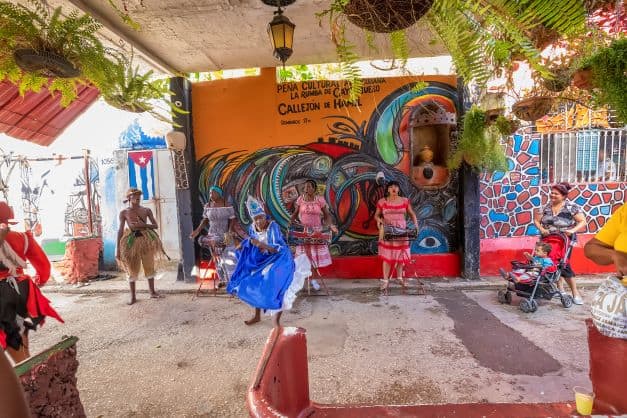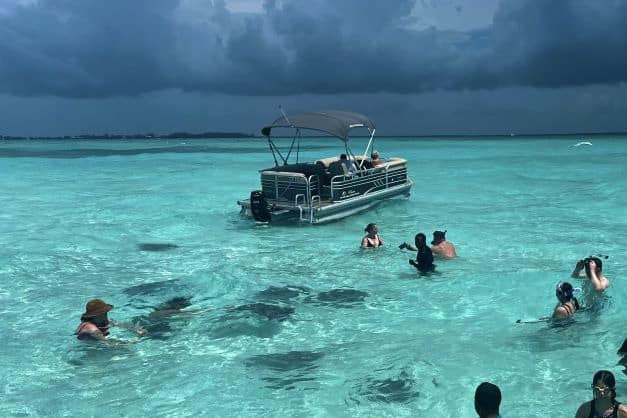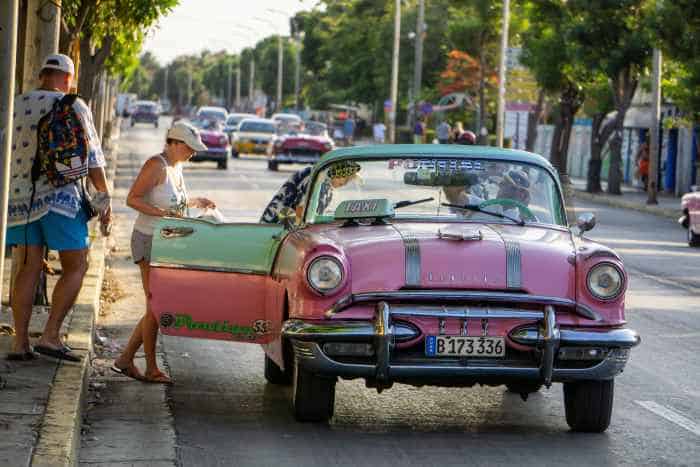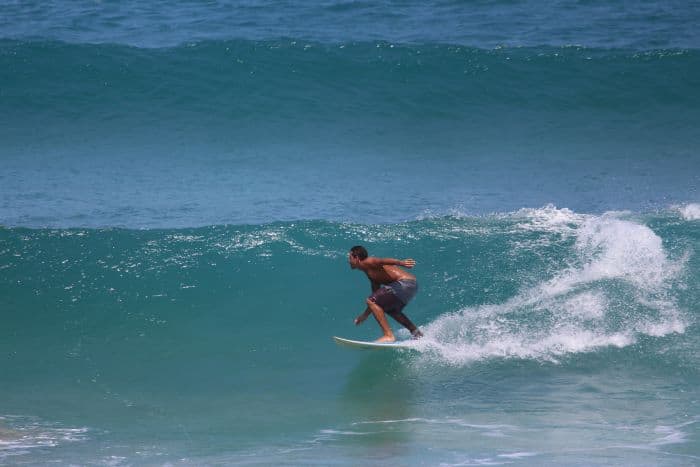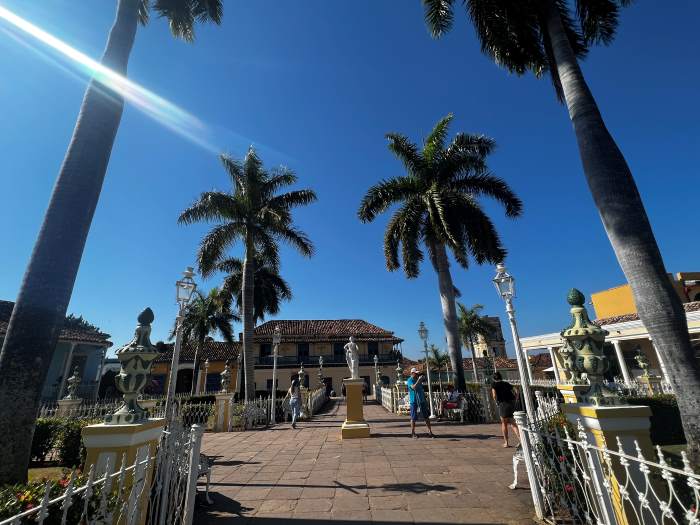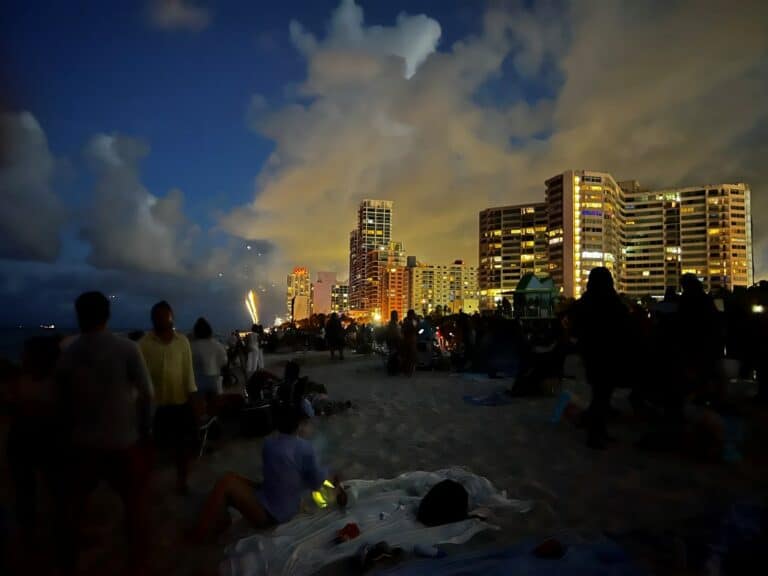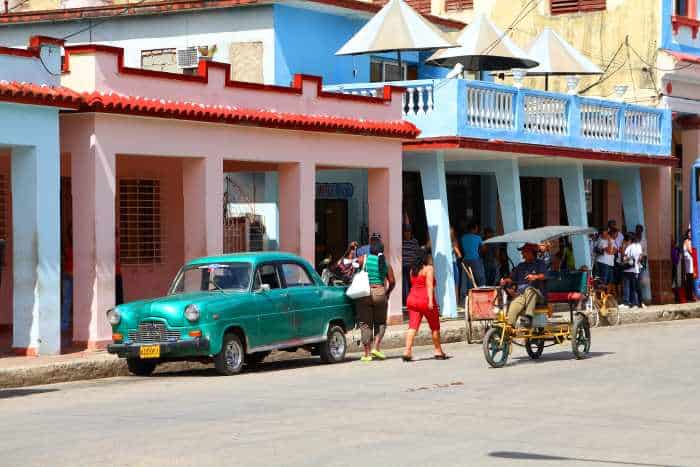In Cuba, music and dance are a big part of life; they are everywhere! You will find people doing a mix of Cuban dance styles anywhere around the city.
On the street corners, clubs, casas de la musica (there are lots of those), and the unique Callejon de Hamel in the Vedado, Havana.
I have been traveling to Cuba for five years, based in Old Havana, for long periods of time. On my first visit to Havana, I discovered the Salsa Casino, and later the Bachata and “the love of my life,” the beautiful Kizomba dance.
Although not all Cubans dance (just like all Norwegians definitely do not know how to ski), I would say “everyone” enjoys music. Salsa Cuban style has its very own beat, and I am sure you will enjoy the storytelling of the rhumba, or just going with the reggaeton flow.

The Most Popular Cuban Dance Styles
These are the most popular dance styles you will meet around Cuba:
- Reggeaton
- Bachata
- Salsa Casino
- Rhumba
- Kizomba (my favorite!)
What Is Special About Afro Cuban Dance Styles And Music?
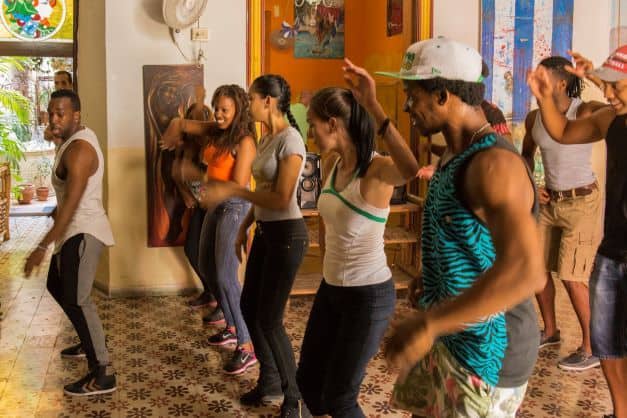
In my apartment in Old Havana, I often wake up in the morning from my neighbor playing super loud salsa, or a bicycle taxi passing by sounding like a mobile discotheque at any time of day or night.
Even if you do not love dancing yourself, you just can not avoid the energy from the different Cuban dance styles and music in the streets, bars, restaurants, and private homes all over Cuba.
The different Cuban dance styles have different origins, and different rhythms, but they have mixed and merged and evolved into the Cuban version of each and every one.
Below you will find a short introduction to some of the different Cuban dance styles, their origin, a little history, and videos to get an impression of what the fuzz is all about!
1. Cuban dances: The Cuban Reggeaton
One music style in particular that has entered the scene is reggaeton.
The reggeaton has become one of the most popular music genres not only in Cuba but in the Spanish-speaking Caribbean.
In countries like Puerto Rico, Panama, the Dominican Republic, Colombia, Venezuela, and Cuba, reggeaton is huge, especially among the younger part of the population.
Reggeaton was a music genre that started in Latin America and the Caribbean among urban youth.
Especially in underground malls and slums, before the first reggaeton artists reached an international public in the 90s.
It took a while for the reggeaton to arrive in Cuba for a variety of reasons. One is the fact that culture is somewhat politicized and cultural content regulated.
Music And Dance In Cuba Evolves
Also, until recent years, Cuba has been pretty much electronically shut off from the rest of the world, so access to and sharing of music was not easy.
Since its arrival in the early 2000s, Cubans have tweaked the reggeaton style into something of their own.
What characterizes the typical Cuban reggaeton, is the special clave, the particular Cuban rhythm.
Cuban reggaeton texts are also known for using a lot of local slang, which is only natural as the whole of Cuban Spanish is full of words you only find in Cuba.
One of the most popular reggaeton artists in Cuba is Gente de Zona, who has worked with people big artists like Enrique Iglesias, Marc Anthony, and Jennifer Lopez.
Other popular names in reggaeton are Chocolate MC, Yomil y el Dany, El Chacal, Divan, El Taiger, Harrison, El Kamel.
The dance itself has special characteristics and patterns, totally different from the rest of the geographical area.
There’s even a Cubaton radio station in Miami playing the hottest artists in the genre!
2. Salsa Cuban Style – The Salsa Casino
Among the Cuban dance styles, the Cuban style salsa, or salsa casino, is a dance that is influenced by a variety of traditions such as Son, Rumba, and even the Santeria religion.
The salsa dance was primarily developed by Cubans and Puerto Ricans living in New York in the late 1960s and early 1970s, so it does actually not originate from Cuba.
The Salsa Casino was adopted, internalized, and “Cubanized”, and is danced in The Dominican Republic, Venezuela as well as Europe, and parts of Asia.
The dance music accompanying the salsa casino is often timba rhythms, or the dance can also be referred to as timba.
This form of salsa has been described as more “aggressive” than other salsa styles, although having seen the Salsa Cali in Colombia, I am not sure I agree!
I still do not have the Cubana moves in my bones and blood, but I am slowly getting ahead, like at the Casa de la Musica in Havana in the Instagram post below!
The Historic Casino Deportivos In Havana
The name Casino comes from the so-called casino deportivos, the large dance halls in Havana in the 1950s where the better-off Cubans went for social dancing and enjoyed themselves on the dance floor.
What differentiates the Cuban salsa style from other, linear salsa dances is that it is focused on figures and turns.
Movements that are picked up from the Cuban Cha Cha Cha, the Mambo and the Rumba, and a little bit from the Jive.
The couple is dancing in circles, making figures around each other.
Watching Cubans dancing Salsa Casino, you will often see spontaneous expressions of Afro-Cuban dance styles mid-salsa, like parts from the Rumba.
Playful rhythms with lots of muscle isolations (wow!) where both parties do a little “solo” close to but not touching each other, playing and teasing before they get back together.
There are lots of Cuban dance teachers in dance schools throughout the world teaching the Cuban salsa style. Maybe you are lucky, and there is someone close to where you live!
3. The Rhumba Dance
The Rhumba dance is a rhythmic couple dance referred to as an Afro-Cuban dance style, originating from Cuba in the 19th Century, so it is a true Cuban dance style.
Yet, “Rumba” is a term that refers to a variety of dances or a “dance party”!
Originally the word “rhumba” was used as a synonym for “party” in northern Cuba, and by the late 19th century it was used internationally to describe the mixture of secular music styles known as the Cuban Rhumba.
The slow and rhythmic Rhumba tells the story of passion and love between a strong, male lover (like the Cuban machista) and a coy, teasing woman.
As the rhumba dance unfolds, you can see the man pursuing the woman. The woman flirts back but also playfully protects herself from the man’s approach.
Often illustrated in the dance by a big skirt or shawl that “cuts off” the man`s movements using various rhumba figures.
Full of sensual moves, or figures, the Rhumba is considered by many (although not all) to be the sexiest of the ballroom dances.
It is also one of the most popular dances and is seen around the world at clubs, parties, weddings, and dance competitions.
Take a look at the videos below to see one version of the Cuban rhumba, Rumba Cubana.
4. Rueda De Casino Salsa
The Rueda de Casino (Rueda) is a type of salsa round dance, born from the Cuban dance style salsa casino.
The Rueda de Casino is danced by several couples in a circle, where one of the men (or the leaders) is directing the group.
The Rueda de Casino is somewhat semi-choreographed by the leader, who is shouting the next move or figure to the men (or leaders), who then lead the women (or followers) in the dance.
The Rueda de Casino also includes a change of partner in the dance, as you see in the video.
Personally, I think the Rueda de Casino is super fun; it is also beautiful to watch as the multiple couples create lovely patterns, a bit challenging, and very social!
5. The Cuban Son Music
As an accessory or a prerequisite to the Cuban dance styles, you find traditional Cuban Son music.
The term translates to “the Cuban sound,” and musicians create the unique Son sound using instruments from Europe and Africa.
The Son has also developed in different directions, but the defining characteristic is a bass pulse that comes before the downbeat in the music.
This gives son and son-based dances their distinctive rhythm; a characteristic that is called the anticipated bass.
The Cuban Son developed in the Eastern Cuba highlands in the early 1900s, around the Sierra Maestra in the Santiago de Cuba area.
Arsenio Rodriguez, a Cuban musician, was the man who popularized and urbanized the Cuban Son.
He took it to Havana and later to the rest of the world, including metropole dance scenes like New York City clubs.
The Cuban Son Has Emigrated To The World
Around the mid-20th Century, the Cuban son sound was adopted by world-famous artists like Duke Ellington.
Ensembles playing the Son Cubano today use all kinds of instruments in their work, but the most particular section of the music is the percussion parts.
Also, a guitar that is known as the Tres guitar, a special guitar with 3 strings, is dominant in traditional versions of Son. This instrument is much less common in the Timba (Cuban salsa).
Son music has a strong emphasis on the off-beats rather than the beats, and especially strong are the 4 and 8 beats.
The Son rhythm gives a very different feel to standard Salsa songs, which tend to emphasize the on-beat. This makes the Son style seem a bit off, in a way, as the 4 and 8 beats seem somewhat delayed.
The Cuban Son (and also guaracha, another Cuban music genre) is the core rhythm of salsa (and timba, which is just a word used to differentiate the Cuban salsa style from the salsa music created in the rest of the world).
The Cuban son is considered the most important, and also the most influential, music that evolved in 20th-century Cuba.
6. The Elegant Kizomba
The Kizomba dance style is a genre of dance and music originating in Angola in the 80s.
The Kizomba definition, or meaning, is something like “party” or “celebration” in Kimbundu, a Bantu language spoken in Angola.
This dance is typical of being slower, romantic, and sensuous compared to the traditional, rather fast Semba dance.
There are basic steps and various figures like salidas (exits) in the Kizomba dance, but the man (or leader) decides what to do next for every Kizomba step the couple takes.
This is one of the things that make this dance one of my absolute favorites, because the level of presence, connection, and communication you need with your partner is intense!
The word Kizomba is also used as an umbrella expression to include several other different styles of dance that are derived from the original sensual Kizomba dance, like Urban Kiz and Kizomba Fusion).
You can learn how to dance Kizomba in various schools in Cuba, and taking classes is the best way to learn.
Take a look at the videos below to see how the pros at La Casona Del Son in Havana do it!
7. The Bachata Style
The Bachata style is a Latin American musical genre that evolved in the Dominican Republic in the first half of the 20th century.
The Bachata style is primarily based on Spanish influences, but it also contains remnants of indigenous and African culture and musical elements.
The bachata music genre is said to represent the cultural diversity of the Dominican Republic’s people.
The Bachata style is considered a deviation from the Bolero, having both strong African influences in music and other music styles like the Cuban Son, as well as Merengue, and the Cha-cha dance.
Along with the music, there also grew a particular dance, the Bachata dance. The Bachata dance is close and sensual but can both be slow, fast, and energetic.
The song lyrics following the Bachata have a tendency to revolve around love, particularly sad love and heartache in particular.
8. The Semba
Semba dance style is originally among the traditional dances and musical styles of Angola.
Semba comes from the singular form of massemba, which means “a touch of the bellies” – one of the most recognizable and entertaining movements in semba.
The style is a predecessor to a variety of music styles originating from Africa, like the Kizomba and kuduro (kuduru), an energetic and fast-paced Angolan techno/house music style.
Semba is very much alive and popular in Angola today as it was long before that country’s independence from Portugal on November 11, 1975.
Various new Semba artists emerge each year in Angola as they honor the original Semba masters, many of whom are still performing.
Other dance styles related to Semba are Kizomba, Rebita, as well as Kazukuta, and Kabetula, which are originally Carnaval Music.
The story told by Semba is often a cautionary tale or story regarding day-to-day life and social events and activities, usually sung in witty rhetoric.
Through Semba music, an artist can convey a broad spectrum of emotions.
It is this feature that has made Semba the preferred music style for a wide variety of Angolan gatherings and social events.
It is considered so versatile that it is used both at funerals on one end and at many Angolan parties on the other.
What Is The Most Popular Cuban Dance Styles Right Now?
In modern Cuba, salsa casino, or the Semba, is not the most popular dance style that colors the dance scene in the bars and clubs of the country.
Although there is live music in many places, and it is absolutely possible to go out for a swing of salsa, the most popular Cuban dance style and music right now is probably the reggeaton.
And not just reggeaton, but Cuban reggaeton.
Reggeaton as a genre originates from Caribbean island Puerto Rico or Panama. The inspiration for its distinctive rhythm, which only has very little variation in its beat, is the military drum.
Other popular styles are the Bachata and the Merengue. Some level of sensual touch to the dances is typical Cuban, as well as dancing with a lot of fuerza, and temperament.
Where Do Cubans Like To Dance?
Cubans dance a lot en casa, at home, on any given night!
There does not need to be a big celebration (or a lot of rum) for Cubans to put on some salsa or bachata and dance around the kitchen or living room!
That said, some days and celebrations are important. Birthdays and Mother’s Day are huge, as well as religious Santeria celebrations like when someone gets a santo, a saint.
Dancing and drums are really important in the Santeria religion, which is adamant in popular Cuban music and dance.
Characteristics Of The Cuban Dance Music
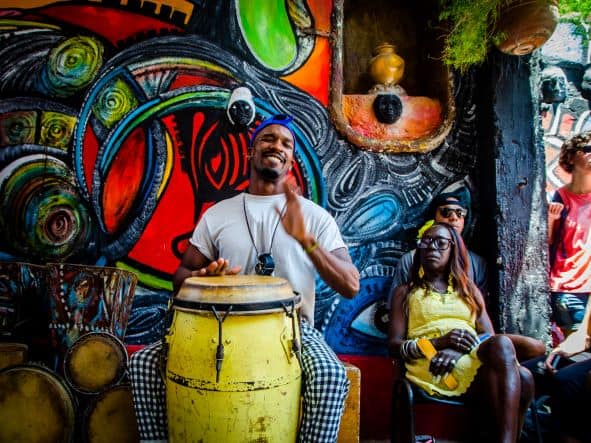
In modern Cuba, maybe for the last few decades, the characteristics of the music style have changed a bit away from the traditional styles like the Danzón, the Son, the Semba, and the Rhumba.
There is possibly a generation gap, where the older parts of the population listen more to the traditional salsa and son music, while the youngsters are into experimenting with new music or mixing new and old rhythms.
And the tourists flocking to Cuba also love the salsa rhythms.

While in Cuba, you should also go see at least one spectacular dance show at Casa de la Musica, the Buena Vista Social Club, or the Cabaret Tropicana in Havana!
Early Cuban Music History
What we consider “Cuban music” actually has its roots in a variety of other places.
Mainly Spain and West Africa because of the trade route in the colonial era centuries ago, with European settlers, and the African slaves that were brought to Cuba.
But also from France, Haiti, Jamaica, and the US.
This way, Cuban music and dance styles have been influenced over time by different genres from different countries.
The most important ones are France, the United States, and Jamaica.
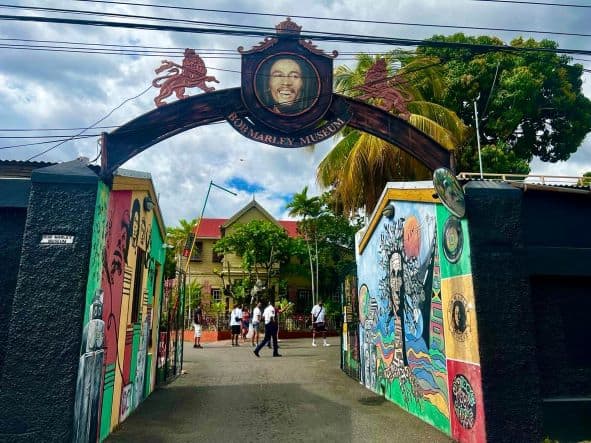
Simultaneously, Cuban music has also had a great influence in other countries.
Contributing to the development of styles like jazz and salsa, the Argentinian tango, Spanish “nuevo flamenco,” and West African Afrobeat.
FAQs Cuban Dance Styles & Cuba Travel
What Do Cuban People Dance To?
In Cuban nightclubs right now, the most popular dance is reggaeton on the clubbing scene.
However, clubs also play a lot of bachata and salsa music, and in some places, you will also be able to dance rhumba and kizomba.
Is The Tango A Cuban Dance?
No, the tango is not a Cuban dance!
The tango probably originates from the early 1800s Buenos Aires working class ports, in Argentina!
Is Mambo A Cuban Dance?
Yes, the origins of the mambo is from Cuba in the 1930s.
The mambo started and evolved as a mixture of rhythms and moves from the Latin American and Afro-Caribbean cultures.
Why are US citizens not allowed to travel to Cuba?
This is NOT correct. US citizens ARE ALLOWED to travel to Cuba.
Americans can choose a reason for Cuba travel among 12 pre-approved reasons for traveling to Cuba, determined by the US Government.
Can US citizens travel to Cuba as a tourist?
Technically, US citizens are NOT allowed to travel to Cuba as a tourist. Americans choose between 12 pre-approved reasons for Cuba travel, among which the most common one is “to help the Cuban people”.
American citizens still need to buy a tourist card, also called a tourist visa, to enter Cuba.
What are the 12 requirements to travel to Cuba?
You can read about the 12 pre-approved reasons to travel to Cuba for US citizens here.
The easiest and most common reason for Cuba travel is “to help the Cuban people”. There is no paperwork or application process connected to this, you just choose your reason and state that reason if anyone asks.
What happens if a US citizen travels to Cuba?
Nothing happens if a US citizen travels to Cuba, apart from hopefully, the US citizen will have a fabulous holiday and encounter with Cuban culture.
US citizens need to choose one of the pre-approved reasons to travel to Cuba and need to buy the PINK Cuban tourist card, also called a tourist visa.
Selected airlines sell this visa/tourist card, or you can buy one online.
What documents do I need to travel to Cuba?
You need the following documents to travel to Cuba:
- Passport valid for 6 months after the date of entry
- Cuban tourist card / tourist visa
- Proof of travel insurance, including health insurance
- Fill out the d’viajero.cu digital document before your journey
Do Americans need to be vaccinated to enter Cuba?
No, there is no requirement for specific vaccines prior to entering Cuba. Your country’s health department probably has recommendations for what vaccines you should consider before entering Cuba.
How Do I get a tourist card for Cuba?
You can buy a tourist card online from Easy Tourist Card, or from the Cuban embassy in your country.
You might also be able to buy a Cuban tourist card from your airline or at the airport prior to departure.
It is possible to buy a Cuban tourist card at Miami International Airport at the check-in counter with American Airlines and Delta Airlines.
How Do I Get A Tourist Visa For Cuba?
A tourist visa is the same as a tourist card for Cuba. You can buy it from the following places:
- Buy one online from Easy Tourist Card
- Buy one from your airline if they offer this
- Buy one at the airport of departure if they offer this
- Buy one from the Cuban Embassy in your country
Is Travel To Cuba Allowed Right Now?
Yes, Cuba travel is allowed right now.
American citizens need to, in addition, choose one of the 12 pre-approved reasons for traveling to Cuba (Americans can not travel as “tourists”) and follow some simple guidelines for traveling in Cuba.
Cuban Dance Styles Wrap-Up
There is a myriad of music and dance influences and genres mixed into the Cuban dance styles and music you find on this island.
All from salsa casino dancing in the many kitchens and living rooms around Cuba to dance clubs where reggaeton rules, bars, restaurants, and grand shows with classic huge arrangements, fierce energy, sensuality, and rhythms.

Whether you prefer to be in the audience or participate, you can do whatever is best for you, but I strongly recommend you test the dancing shoes for at least one night while visiting Cuba. You will easily get the hang of a basic step or two!
Find a Cuban Casa de la Musica, and say yes when someone asks you to dance. Or, find a dancing school; there are plenty to choose from across the island.
Cuban Dance Style Classes In Havana Cuba!
Now that you have gotten to know all the different Cuban dance styles a little bit, hopefully, you have an idea of what might be something for you!
Not all Cubans are professional dancers born with rhythmic hips, contrary to popular myth perhaps.
Yet, music and dancing are still part of pretty much any celebration taking place in Cuba, as well as daily life. Music in Cuba is everywhere!
If you are not sure how to go about finding and booking dance classes in Havana Cuba, I have a few suggestions.
I have personally been going to La Casa del Son in Old Havana whenever I visited over a period of two years.
They have great teachers in a beautiful building with dance studios over two floors, high ceilings, and a gorgeously art-detailed interior.
The school is located in Calle (street) Emperado, between Calle Compostela and Calle Aguacate, super centrally in Havana Vieja.
At Casona del Son, you can take private classes or join a group class, and they offer courses in several dance styles, including Salsa Casino, Kizomba, Bachata, and Lady Styling classes.
Go to the Casona del Son home page to get more information about classes and booking, or follow them on Facebook.

Tony & Loliett run a dance school for Urban Kizomba from their studio, Habanakiz, in Old Havana.
I have been taking classes with Tony irregularly since 2020, and he (and his esposa Loliett) are both wonderful people and fun and super-skilled teachers!
You can contact them on Instagram if you are interested in this particular dance style; the beautiful kizomba is my absolute favorite; it is hard – but when it flows, it is magic. Go find out!
